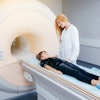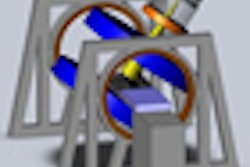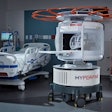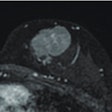Wednesday, November 28 | 10:40 a.m.-10:50 a.m. | SSK10-02 | Room E451A
MRI with metal artifact reduction software (MARS) is proving useful for the surveillance of metal-on-metal hips, diagnosing pseudotumors, and characterizing patterns of muscle atrophy, according to a study from the Imperial College Healthcare NHS Trust in the U.K.The prospective study evaluated 179 patients (median age, 54 years) with 200 metal-on-metal hips using MARS MRI; 154 of these patients had poor hip function and unexplained pain, and 25 had excellent function and were used as controls.
MARS MRI was performed with a 1.5-tesla system, and results were reported to musculoskeletal radiologists who were blinded to clinical data.
MARS MRI diagnosed a pseudotumor in 73 hips with poor function and in 13 hips with excellent function. Muscle atrophy of greater than 30% was detected in hip abductors in 72 hips with poor function and in five hips with excellent function.
The researchers concluded that MARS MRI offers excellent visualization of the periprosthetic soft tissues around metal-on-metal hips, and also provides bony imaging.
"This is important because soft-tissue disease is common following metal-on-metal hip arthroplasty due to the surgery itself and metal-related disease," said lead study author Dr. Shiraz Sabah. "Accurate assessment of the soft tissues is important for planning of revision surgery and unexplained pain is common following metal-on-metal hip arthroplasty."
MRI can promote better planning and timing of revision surgery, with the potential for better patient outcomes, and it's particularly useful for assessing muscle atrophy and can prompt earlier intervention and guide the choice of revision prosthesis, he noted.
"Patients with good hip function and a pseudotumor are of particular interest because the natural history of these lesions is unknown," he said. "We plan longitudinal assessment of patients with pseudotumor to determine changes in soft-tissue lesions over time, changes in hip function over time, and the benefit of watchful waiting against early intervention."



.fFmgij6Hin.png?auto=compress%2Cformat&fit=crop&h=100&q=70&w=100)




.fFmgij6Hin.png?auto=compress%2Cformat&fit=crop&h=167&q=70&w=250)











